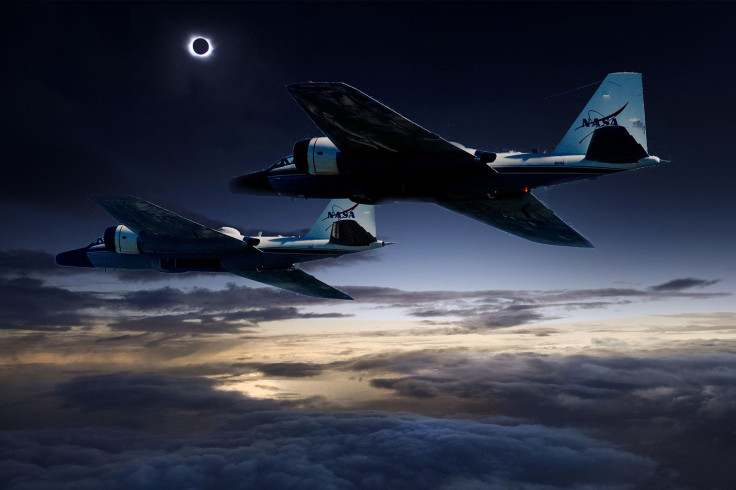Solar Eclipse Dates: NASA To Fly Jets During Eclipse, Study Sun, Mercury

August’s upcoming total solar eclipse is offering scientists nationwide a unique opportunity to study the fairly rare event, the sun and the Earth. NASA is funding a total of 11 projects nationwide and asking citizens to pitch in by reporting data from their locations as well. One of those projects involves two research jets, fitted with telescopes, traveling in the shadow of the eclipse.
From the ground, the full total eclipse will occur Aug. 21 in 14 states, but will last no more than roughly two and a half minutes in any given area. By chasing the eclipse via jet the research teams can conduct research under prolonged eclipse conditions of more than seven minutes.
Read: Solar Eclipse 2017: NASA Wants You To Help Collect Data On Event
The WB-57F jets are mounted with telescopes on the nose of the planes, says NASA. The plan is to use them to capture the clearest images of the sun’s atmosphere, called the corona, ever taken. In addition to photos of the sun, the mission will take the first thermal images of Mercury ever. The jets will take off from Texas, near the Johnson Space Center, and fly North to head high into the stratosphere where there is less turbulence and it is significantly darker than it will be on the ground. Each plane will travel for three and a half minutes over Missouri, Illinois and Tennessee making observations.
When the moon moves into position between the sun and the Earth it will perfectly block the light from the sun, making the corona easier to see than it usually is. Part of the reason researchers are so interested in learning more about the corona is that it’s actually hotter than the surface of the sun, a strange phenomena that perplexes researchers. During the eclipse the planes will capture 30 photos a second of the corona to hopefully aid in the study of whether the waves in the corona move away or towards the sun and their size and strength, according to NASA. This could help unravel the mystery of nanoflares on the sun.
Read: Total Solar Eclipse August 2017: What It Is, How And Where To See It

Those photos of the sun will be taken in visible light wavelengths more specifically the green light that ionized iron gives off. This is best for showing the area of the corona and offers a view that other telescopes don’t capture.
The observations of Mercury will be taken a half hour before the eclipse and a half hour after while the sky is still dark in infrared to map the temperature of the planet. The planet has great variation in temperature due to its long days. Examining how quickly the surface cools during an event like this can help scientists determine what the surface is made of and how the rocky planet formed, says NASA. Information that could potentially be applied to other planets like Mercury.
© Copyright IBTimes 2024. All rights reserved.





















